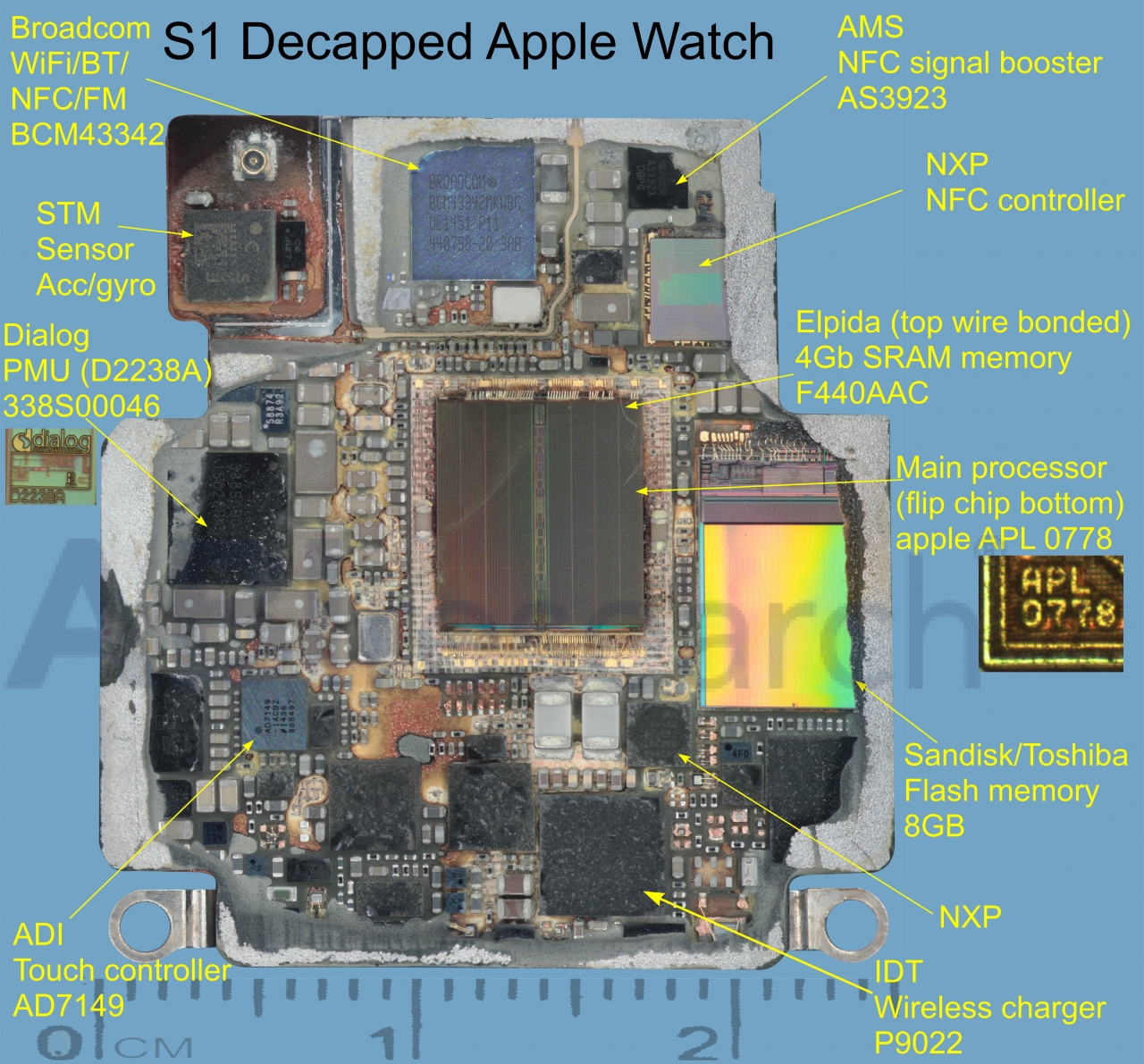ABI Research’s TeardownIQ has performed a teardown of the Apple S1 ‘System in Package’ (SiP) used to power the Apple Watch.
The teardown reveals a design centered on a custom Apple Processor (APL 0778); however, many additional components have been identified including: Broadcom (BCM43342), Dialog PMU, NXP (NFC controller), and AMS (NFC booster) connectivity, IDT wireless charger receiver, Elpida RAM, SanDisk / Toshiba Flash memory, STM sensors, and a couple ADI capacitive touch solutions.
—
An entire computer architecture on a single chip.
Massive constraints have a way of inspiring interesting, creative solutions. A prime example is the custom-designed chip at the heart of Apple Watch. No traditional computer architecture could fit within such a confined space. So we found a way to integrate many subsystems into one remarkably compact module, which is then completely encapsulated in resin to protect the electronics from the elements, impact, and wear. Configuring an entire computer system on a single chip is an industry first and represents a singular feat of engineering and miniaturization.
—
“The design is an obvious variation from Apple’s smartphones, with many high-end functions / chips included that normally would not be found in a simple watch,” comments Jim Mielke, VP Engineering at ABI Research and head of the TeardownIQ group. “Judging by the complexity of the printed circuit board (PCB), and the number of parts on the PCB, one might think the Apple watch is a full-fledged cellular connected watch but in fact connectivity is limited to Wi-Fi, Bluetooth, and NFC.”
A few of key surprises in the design are two touch controller design wins for ADI, and the IDT wireless charging receiver. ADI has not seen a lot of design wins in mobile devices over the last 3 to 5 years but it seems to have a new focus as it has shown up in this Apple design and its sensors were revealed in a few other very recent teardowns.
ABI’s teardowns are available to purchase at the link below or you can check out the photo for a breakdown of S1 components.



Recent Comments